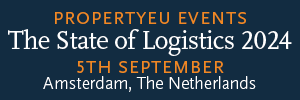The Sustainable Finance Disclosure Regulation (SFDR) has been brought in to achieve much needed outcomes, writes Emilija Emma, head of report for zero (real estate) at Verco.
The SFDR strives to boost the comparability and robustness of sustainability claims made about financial products, and to standardise disclosures of their sustainability-related performance.
Verco interviewed a selection of real estate owners and investors, all at different stages of interpreting and applying the new regulatory regime. Anonymous views on the perceived clarity and the predicted impact of the regulation were collected.
The requirements
The SFDR sets out requirements for every financial market participant (e.g. an asset manager or an investor) that markets a financial product in the EU.
They must disclose how sustainability risk is – or isn’t - integrated into their investment decisions. Depending on the fund’s stated objective, it also requires them to regularly measure and report on standard metrics reflecting the fund’s sustainability performance.
The requirements are more stringent for financial products labelled as promoting social or environmental characteristics (so-called Article 8 funds), and products which have sustainability as their stated primary objective (Article 9).
Reflections from the market
The regulation seeks to make sustainability a factor which can be easily assessed, interpreted, and used by investors when making investment decisions. This would in turn stimulate investee companies to transition away from unsustainable activities simply as a way to attract funding.
However, our research indicates a shared view that, while the aims of the legislation are apt, its excessive complexity and lack of clarity mean that it is at risk of failing in its primary aim of incentivising investments in sustainable activities.
On a practical level, the way in which the regulation should be applied to real estate remains an area of uncertainty. For instance, there are two different views on the exact subset of the principal adverse impact (PAI) indicators which real estate players must report against.
The appropriateness of the prescribed way to assess a portfolio’s climate impacts has been questioned too, due to the different ways the EPBD has been implemented across Europe, and the known disconnect between a theoretical building performance rating and its actual energy consumption.
However, arguably the most significant criticism has been the regulation’s failure to meaningfully segment the market. The Article 8 category has been called broad enough that almost any fund can meet its requirements.
Meanwhile, Article 9 requirements are so stringent that the real estate companies we spoke – many of which are considered market leaders in sustainability - are finding it impossible to classify any of their existing funds as Article 9.
Significantly, we also found that Article 9 requirements effectively exclude funds which invest in imperfect real estate assets and then upgrade them via refurbishment and operational interventions; they only allow funds to package assets which are already at an excellent level of sustainability performance.
Meanwhile, investors – especially those who have not invested in the company’s products before – are pushing for Article 9 labelling. This may mean that the regulation will draw funding away from companies which are actively engaged in greening their portfolios - exactly the type of activity which should be encouraged if we are to stay within global carbon budgets and avoid catastrophic climate change.
Considering that 80% of the building stock that will be here in 2050 has already been built, this is a significant consideration.
The way ahead
As sustainability disclosures become more widespread, there is increasing need to differentiate between real claims and greenwashing. The SFDR takes steps towards this goal – but is hampered. While the consensus is that there are several technical criteria which are still very much open to interpretation, we hope that the next stages of the regulation will elaborate on the questions that many are asking.
The key takeaway from our review – one stressed by many in the industry at present – is the crucial role that sustainability professionals must play in the education of investors about the regulatory landscape and the sustainability credentials of their products.
While SFDR is currently seen mostly as an administrative burden by those beginning to report against it, join our webinar 'Using SFDR/EU Taxonomy to your net zero advantage' on 28th March to find out how to use it to your net zero advantage.
You can register for the webinar here



































